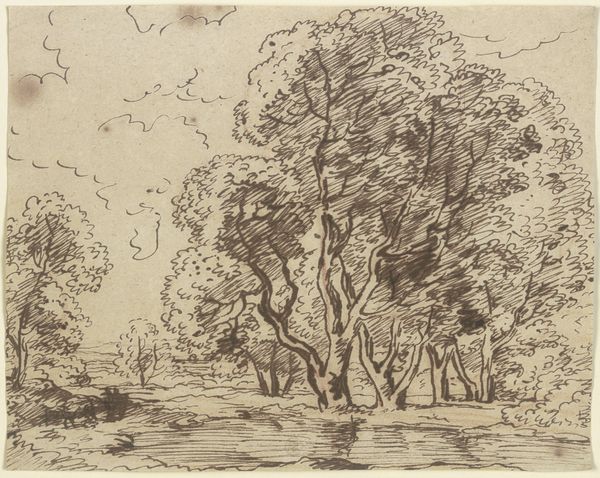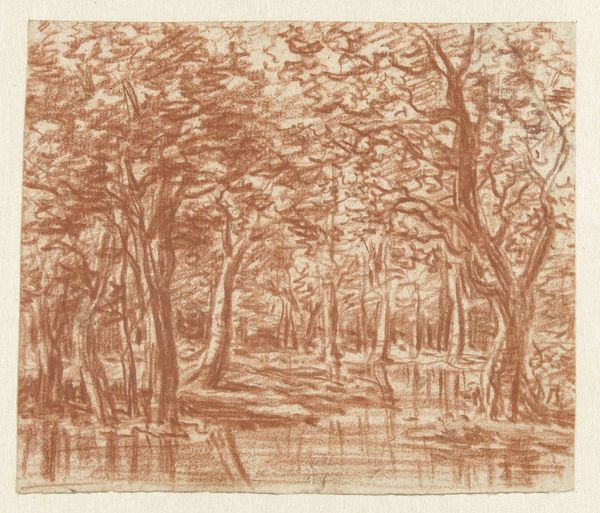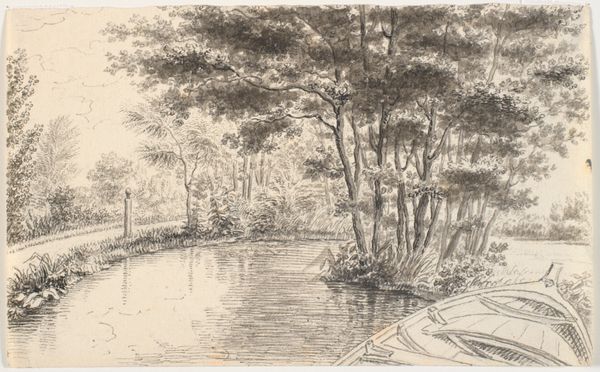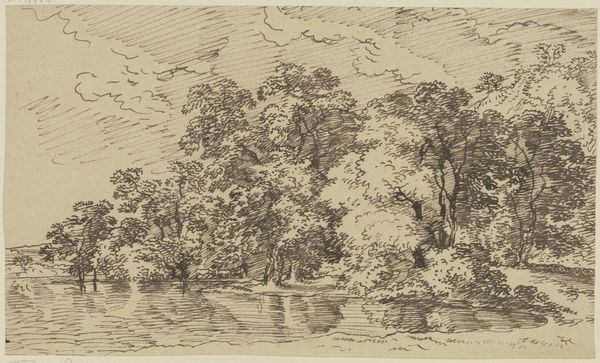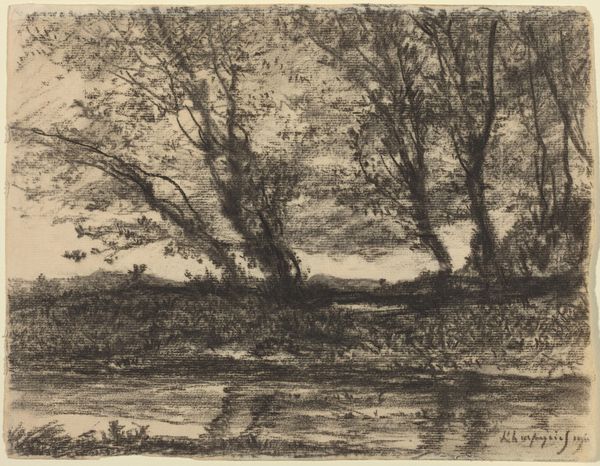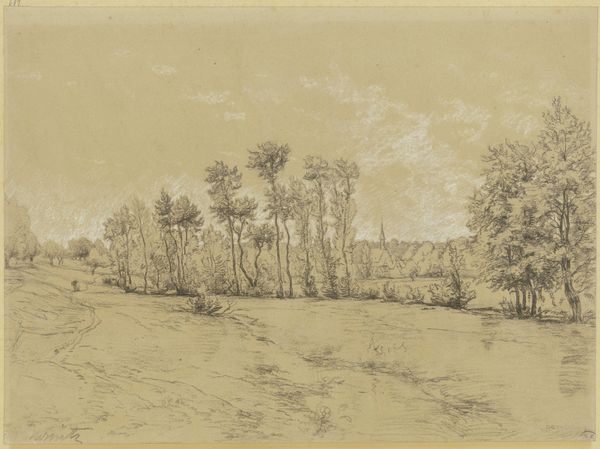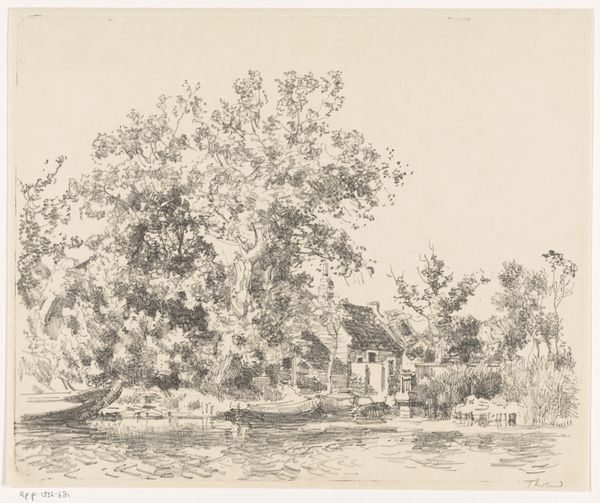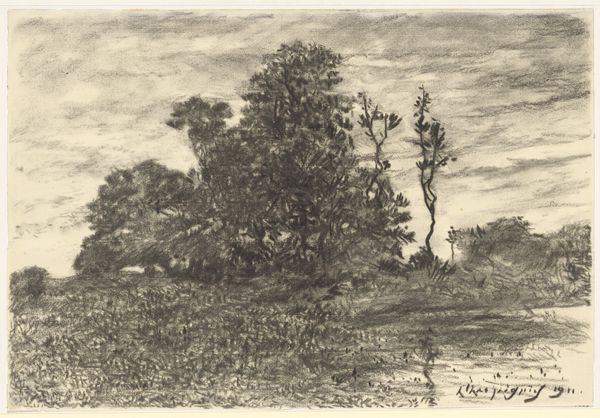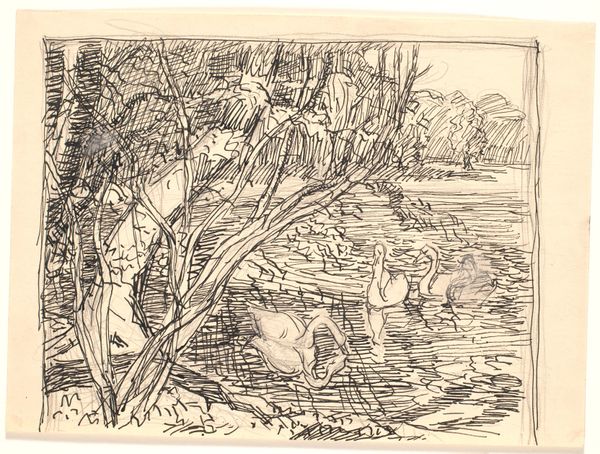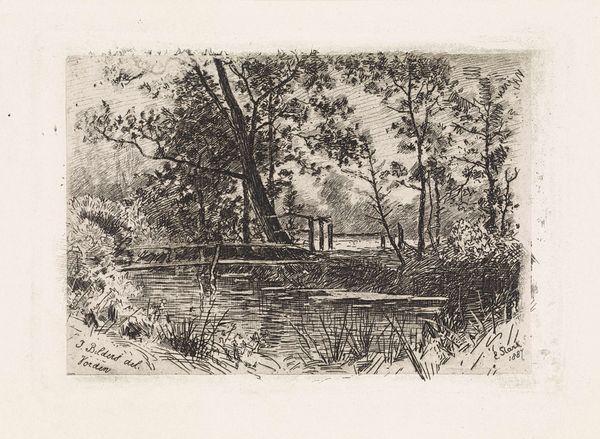
print, etching
#
ink drawing
#
pen drawing
# print
#
impressionism
#
etching
#
landscape
#
etching
#
line
Dimensions: plate: 20.2 × 29.4 cm (7 15/16 × 11 9/16 in.) sheet: 24.2 × 36.5 cm (9 1/2 × 14 3/8 in.)
Copyright: National Gallery of Art: CC0 1.0
Curator: Let's turn our attention to "Willows of the Mottiaux Islands," an etching by Fèlix Bracquemond, created in 1868. Editor: My immediate reaction is one of quiet melancholy. The scene, rendered so delicately in line, feels steeped in a certain pensive solitude. Curator: Bracquemond was deeply engaged with the aesthetic and intellectual movements of his time. We can see connections to Impressionism, which focused on capturing fleeting moments and the effects of light, but also with a growing social awareness linked to the effects of industrial capitalism. It’s as if this serene scene provides refuge, and perhaps hints at social commentary through contrast. Editor: Absolutely. And when you consider etching as a process – the way the artist meticulously manipulates the metal plate, the application of acid, the repeated proofing and printing – you realize that the work involved far more than a fleeting impression. The resulting landscape reflects the careful labor and material engagement central to its creation, which underscores its connection to a larger industrial and social sphere. Curator: Furthermore, Bracquemond’s choice of subject—the willow trees rooted in water— speaks volumes about resilience and adaptability. Trees are important characters in art and lore; Bracquemond uses the willows to convey a certain melancholic narrative linked to the social and political turmoils in 19th century France, like the Franco-Prussian War, but this landscape also offers a meditative, pastoral place. Editor: And note the labor embodied by that small boat near the willows, a reminder of the daily lives that these idyllic landscapes both supported and were shaped by. One should really see the piece to appreciate its attention to detail – for me that makes this more than just landscape and more of a document of lived experience. Curator: Indeed. Bracquemond offers a powerful commentary through quiet observation, intertwining human existence with natural endurance and broader societal concerns. Editor: I see how Bracquemond encourages one to reconsider the social dynamics underlying artistic production itself. His approach to both the medium and the subject make one think.
Comments
No comments
Be the first to comment and join the conversation on the ultimate creative platform.

